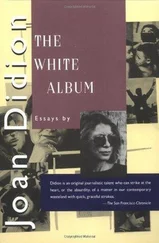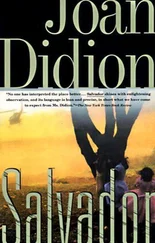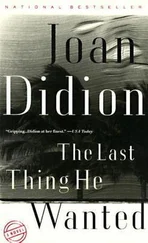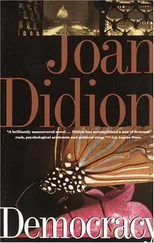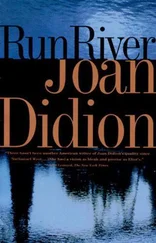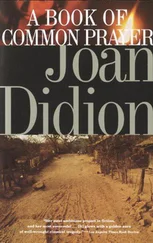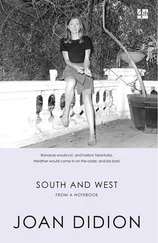It begins, of course, in what we remember.
Hawaii is our Gibraltar, and almost our Channel Coast. Planes, their eyes sharpened by the year-round clearness of blue Pacific days, can keep easy watch over an immense sea-circle, of which Hawaii is the centre. With Hawaii on guard, a surprise attack on us from Asia, the experts believe, would be quite impossible. So long as the great Pearl Harbor Naval Base, just down the road from Honolulu, is ours, American warships and submarines can run their un-Pacific errands with a maximum of ease. Pearl Harbor is one of the greatest, if not the very greatest, maritime fortresses in the world. Pearl Harbor has immense reserves of fuel and food, and huge and clanging hospitals for the healing of any wounds which steel can suffer. It is the one sure sanctuary in the whole of the vast Pacific both for ships and men.
John W. Vandercook, in Vogue, January 1, 1941
Every afternoon now, twenty-five years after the fact, the bright pink tour boats leave Kewalo Basin for Pearl Harbor. It has a kind of sleazy festivity at first, the prospect of an outing on a fine day, the passengers comparing complaints about their tour directors and their accommodations and the food at Canlis’ Charcoal Broiler, the boys diving for coins around the boats; “Hey Mister Big,” they scream. “How’s about a coin.” Sometimes a woman will throw a bill, and then be outraged when the insolent brown bodies pluck it from the air and jeer at her expectations. As the boat leaves the basin the boys swim back, their cheeks stuffed with money, and the children pout that they would rather be at the beach, and the women in their new Liberty House shifts and leftover leis sip papaya juice and study a booklet billed as An Ideal Gift — Picture Story of December 7.
It is, after all, a familiar story that we have come to hear— familiar even to the children, for of course they have seen John Wayne and John Garfield at Pearl Harbor, have spent coundess rainy afternoons watching Kirk Douglas and Spencer Tracy and Van Johnson wonder out loud why Hickam does not answer this morning — and no one listens very closely to the guide. Sugar cane now blows where the Nevada went aground. An idle figure practices putting on Ford Island. The concessionaire breaks out more papaya juice. It is hard to remember what we came to remember.
And then something happens. I took that bright pink boat to Pearl Harbor on two afternoons, but I still do not know what I went to find out, which is how other people respond a quarter of a century later. I do not know because there is a point at which I began to cry, and to notice no one else. I began to cry at the place where the Utah lies in fifty feet of water, water neither turquoise nor bright blue here but the gray of harbor waters everywhere, and I did not stop until after the pink boat had left the Arizona, or what is visible of the Arizona: the rusted after-gun turret breaking the gray water, the flag at full mast because the Navy considers the Arizona still in commission, a full crew aboard, 1, 102 men from forty-nine states. All Iknow about how other people respond is what I am told: that everyone is quiet at the Arizona.
A few days ago someone just four years younger than I am told me that he did not see why a sunken ship should affect me so, that John Kennedy s assassination, not Pearl Harbor, was the single most indelible event of what he kept calling “our generation.” I could tell him only that we belonged to different generations, and I did not tell him what I want to tell you, about a place in Honolulu that is quieter still than the Arizona: the National Memorial Cemetery of the Pacific. They all seem to be twenty years old, the boys buried up there in the crater of an extinct volcano named Punchbowl, twenty and nineteen and eighteen and sometimes not that old. “samuel foster harmon,” one stone reads. “PENNSYLVANIA. PVT 27 REPL DRAFT 5 MARINE DIV. WORLD war II. April 10 1928—march 25 1945.” Samuel Foster Harmon died, at Iwo Jima, fifteen days short of his seventeenth birthday. Some of them died on December 7 and some of them died after the Enola Gay had already bombed Hiroshima and some of them died on the dates of the landings at Okinawa and Iwo Jima and Guadalcanal and one whole long row of them, I am told, died on the beach of an island we no longer remember. There are 19, 000 graves in the vast sunken crater above Honolulu.
I would go up there quite a bit. If I walked to the rim of the crater I could see the city, look down over Waikiki and the harbor and the jammed arterials, but up there it was quiet, and high enough into the rain forest so that a soft mist falls most of the day. One afternoon a couple came and left three plumeria leis on the grave of a California boy who had been killed, at nineteen, in 1945. The leis were already wilting by the time the woman finally placed them on the grave, because for a long time she only stood there and twisted them in her hands. On the whole I am able to take a very long view of death, but I think a great deal about what there is to remember, twenty-one years later, of a boy who died at nineteen. I saw no one else there but the men who cut the grass and the men who dig new graves, for they are bringing in bodies now from Vietnam. The graves filled last week and the week before that and even last month do not yet have stones, only plastic identification cards, streaked by the mist and splattered with mud. The earth is raw and trampled in that part of the crater, but the grass grows fast, up there in the rain cloud.
It is not very far from the crater down to Hotel Street, which is to Honolulu what Market Street is to San Francisco, the bright night street in a port city. The carrier Coral Sea was in Honolulu that week, and 165 men in from Vietnam on rest-and-recuperation leave, and 3, 500 Marines on their way to Okinawa and then to Vietnam (they were part of the reactivated 5th Marine Division, and it was the 5th, if you will remember, to which the sixteen-year-old Samuel Foster Harmon belonged), and besides that there was the regular complement of personnel for Pearl and Hickam and Camp H. M. Smith and Fort Shafter and Fort De Russy and Bellows A. F. B. and the Kaneohe Marine Air Station and Schofield Barracks, and sooner or later they all got downtown to Hotel Street. They always have. The Navy cleaned out the red-light houses at the end of World War II, but the Hotel Streets of this world do not change perceptibly from war to war. The girls with hibiscus in their hair stroll idly in front of the penny arcades and the Japanese pool halls and the massage studios. “girls wanted for massage work,” the signs say. “what a refreshing new tingle.” The fortune-tellers sit and file their nails behind flowered paper curtains. The boys from the cast of the Boys Will Be Girls Revue stand out on the sidewalk in lame evening dresses, smoking cigarettes and looking the sailors over.
And the sailors get drunk. They all seem to be twenty years old on Hotel Street, too, twenty and nineteen and eighteen and drunk because they are no longer in Des Moines and not yet in Danang. They look in at the taxi-dance places and they look in at the strip places with the pictures of Lili St. Cyr and Tempest Storm outside (Lili St. Cyr was in California and Tempest Storm in Baltimore, but never mind, they all look alike on Saturday night in Honolulu) and they fish in their pockets for quarters to see the Art Movie in the back of the place that sells Sunshine and Nude and all the paperbacks with chained girls on the cover. They have snapshots laminated. They record their own voices (Hi, Sweetheart, I’m in Honolulu tonight) and they talk to the girls with hibiscus in their hair.
But mostly they just get a little drunker, and jostle around on the sidewalk avoiding the Hawaii Armed Forces Patrol and daring one another to get tattooed. In a show of bravado they rip off their shirts a half block before they reach Lou Normand’s Tattoo Parlor and then they sit with glazed impassivity while the needle brands them with a heart or an anchor or, if they are particularly flush or particularly drunk, a replica of Christ on the cross with the stigmata in red. Their friends cluster outside the glass cubicle watching the skin redden and all the while, from a country-and-Western bar on the corner, “King of the Road” reverberates down Hotel Street. The songs change and the boys come and go but Lou Normand has been Thirty Years in the Same Location.
Читать дальше




